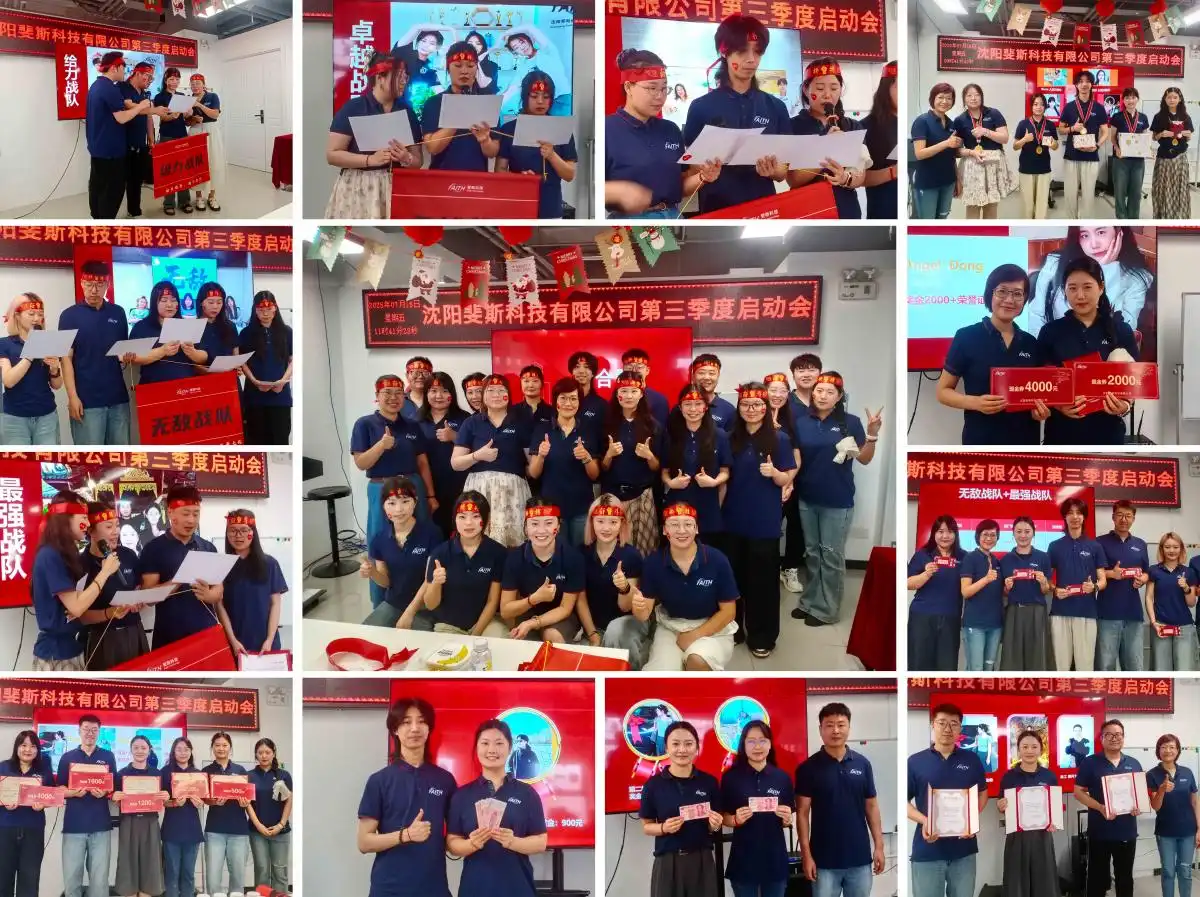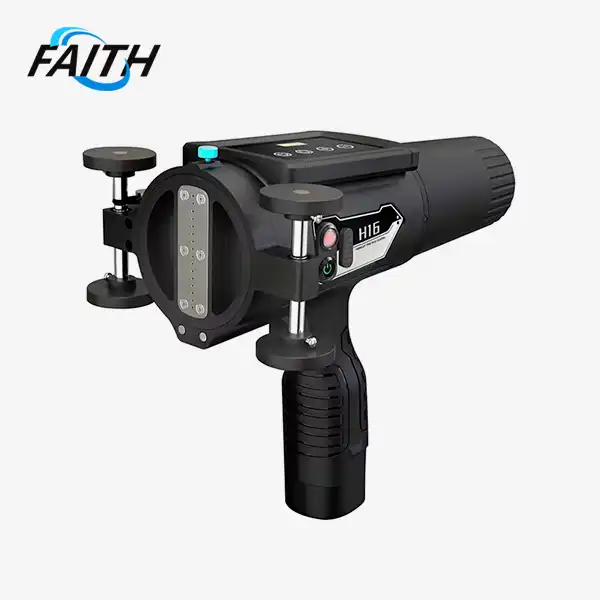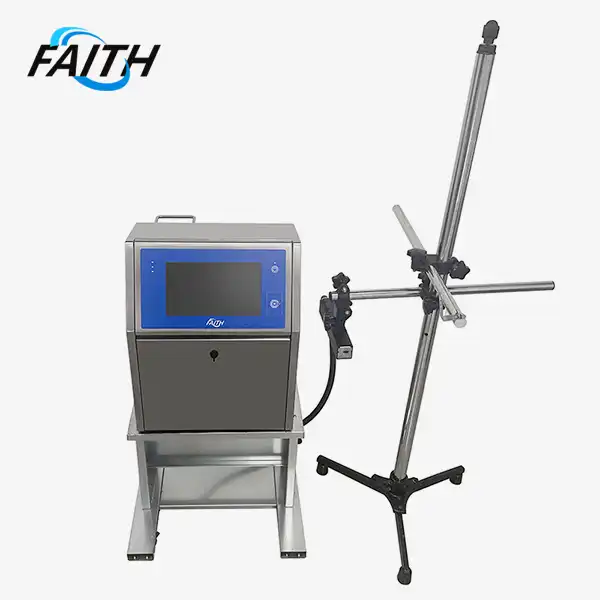The Science Behind Industrial CIJ Printing Systems' Permanent Marking
Industrial CIJ (Continuous Inkjet) printing systems achieve permanent marking through a sophisticated process of ink droplet generation, charging, and deflection onto a substrate. This non-contact method enables high-speed, reliable marking on various materials and surfaces, crucial for industrial applications. The science behind industrial CIJ printing systems involve pressurized ink delivery, droplet formation via piezoelectric vibration, electrostatic charging and deflection, and rapid solvent evaporation for durable marks. This technology offers advantages such as high-speed printing, versatility across materials, and non-contact application, making it ideal for diverse industrial needs.
The Intricate Mechanics of CIJ Printing Technology
Ink Delivery and Droplet Formation
At the heart of industrial CIJ printing systems lies a complex process of ink delivery and droplet formation. These systems utilize a pressurized ink system to transport ink to the printhead with precision. Within the printhead, a piezoelectric crystal plays a crucial role. This crystal vibrates at an incredibly high frequency, typically in the range of 50-80 kHz. This rapid vibration breaks the continuous stream of ink into a series of tiny, uniform droplets.
The size and frequency of these droplets are meticulously controlled to ensure optimal print quality. Typically, droplet sizes range from 40 to 75 microns in diameter, depending on the specific application requirements. This level of control is essential for achieving the fine detail and clarity needed in industrial marking applications.
Electrostatic Charging and Deflection
Once the ink droplets are formed, they enter the next phase of the CIJ inkjet printing process: electrostatic charging and deflection. As the droplets pass through the printhead, they encounter an electrode. This electrode selectively applies an electrical charge to specific droplets based on the desired print pattern. The charging process is incredibly precise, occurring in microseconds for each individual droplet.
After charging, the droplets pass through a pair of charged deflection plates. These plates create an electrostatic field that influences the trajectory of the charged droplets. The strength of this field determines the degree of deflection, allowing for precise control over where each droplet lands on the substrate. This mechanism enables the formation of characters, logos, and other markings with remarkable accuracy.
Interestingly, not all droplets are used for printing. Uncharged droplets are not deflected and are typically recycled back into the ink system, contributing to the overall efficiency of CIJ printing systems.
Substrate Interaction and Permanent Marking
The final stage of the CIJ printing process involves the interaction between the ink droplets and the substrate. CIJ inks are specially formulated to adhere to a wide variety of materials, including both porous and non-porous surfaces. This versatility is a key advantage of industrial CIJ printing systems, allowing them to mark on materials ranging from plastics and metals to glass and even some fabrics.
When the ink droplets make contact with the substrate, the solvents in the ink begin to evaporate rapidly. This quick evaporation leaves behind the pigments and resins that form the permanent mark. The speed of this process contributes to the high production rates achievable with CIJ printing, with some systems capable of marking at speeds up to 576 m/min.
The permanence of the mark is crucial for many industrial applications, particularly in sectors where traceability and product identification are essential. CIJ inks are designed to resist fading, smudging, and chemical interference, ensuring that the markings remain legible throughout the product's lifecycle.
Advantages and Applications of Industrial CIJ Printing Systems
High-Speed Production Capabilities
One of the most significant advantages of industrial CIJ printing systems is their ability to operate at high speeds without compromising print quality. This capability is particularly valuable in high-volume production environments where marking speed can be a bottleneck. The continuous nature of the ink jet, combined with precise droplet control, allows for marking speeds that can keep pace with even the fastest production lines.
For instance, the FBP002 model from Shenyang Faith Technology Co., Ltd. can achieve printing speeds of up to 576 m/min. This remarkable speed is possible due to the advanced droplet generation and control mechanisms employed in modern CIJ systems. The ability to maintain consistent print quality at such high speeds is a testament to the sophisticated engineering behind these systems.
Versatility in Substrate Compatibility
Industrial CIJ printing systems excel in their ability to mark on a diverse range of materials and surface types. This versatility is a key factor in their widespread adoption across various industries. CIJ printers can effectively mark on:
- Plastics (both porous and non-porous)
- Metals (including coated and uncoated surfaces)
- Glass
- Ceramics
- Paper and cardboard
- Textiles
- Wood
Moreover, CIJ technology is particularly adept at marking on curved, uneven, or flexible surfaces. This capability is crucial in industries such as automotive, where parts often have complex geometries, or in food and beverage, where packaging may have irregular shapes.
Non-Contact Printing Benefits
The non-contact nature of CIJ printing offers several significant advantages in industrial applications:
- Minimal Product Damage: Since there's no physical contact between the printhead and the substrate, the risk of damaging delicate products or packaging is greatly reduced.
- Consistent Print Quality: The lack of contact ensures that print quality remains consistent, even on uneven or textured surfaces.
- Reduced Maintenance: With fewer moving parts in contact with the substrate, there's less wear and tear on the printing system, potentially lowering maintenance requirements.
- Flexibility in Print Distance: CIJ systems can typically print from a distance of 3-30mm, allowing for adaptability in various production line setups.
Innovations and Future Trends in CIJ Printing Technology
Advanced Ink Formulations
The evolution of industrial CIJ printing systems is closely tied to advancements in ink technology. Recent innovations in ink formulations have expanded the capabilities of CIJ printing, offering improvements in areas such as:
- Environmental Sustainability: Development of eco-friendly inks with reduced VOC content and improved biodegradability.
- Enhanced Adhesion: New formulations that provide better adhesion to challenging substrates, expanding the range of materials that can be marked effectively.
- Specialty Inks: Creation of inks with unique properties such as thermochromic (changes color with temperature) or photochromic (changes color with light exposure) capabilities for advanced security and authentication applications.
- Food-Grade Inks: Development of inks that meet stringent food safety regulations, allowing for direct marking on food products or packaging.
Integration with Industry 4.0 Technologies
As industries move towards greater automation and data-driven operations, industrial CIJ printing systems are evolving to integrate seamlessly with Industry 4.0 technologies. This integration is manifesting in several ways:
- IoT Connectivity: Modern faith printers are being equipped with IoT capabilities, allowing for real-time monitoring of printer performance, ink levels, and maintenance needs. This connectivity enables predictive maintenance strategies and minimizes downtime.
- Data Integration: CIJ systems are increasingly capable of interfacing with enterprise resource planning (ERP) and manufacturing execution systems (MES), allowing for automated updating of print content based on production data.
- AI-Enhanced Print Quality: Artificial intelligence algorithms are being developed to optimize print settings in real-time, adjusting for variations in substrate properties or environmental conditions to maintain consistent print quality.
- Augmented Reality Maintenance: Some manufacturers are exploring the use of AR technologies to assist with printer maintenance and troubleshooting, potentially reducing downtime and improving operator efficiency.
These technological integrations are making industrial CIJ printing systems more intelligent, efficient, and adaptable to the evolving needs of modern manufacturing environments.
Miniaturization and Portability
Another trend in the development of industrial CIJ printing systems is the move towards more compact and portable designs. This trend is driven by several factors:
- Space Constraints: As production lines become more compact and efficient, there's a growing demand for smaller printing systems that can fit into tight spaces.
- Flexibility in Production: Portable CIJ printers allow for greater flexibility in production setups, enabling quick redeployment of marking capabilities as needed.
- On-Site Marking: In some industries, there's a need for marking products or components outside of traditional production line environments. Portable CIJ systems can meet this need for on-site or field marking.
Manufacturers like Shenyang Faith Technology Co., Ltd. are responding to this trend with models like the FBP002, which offers a compact design (400mm x 520mm x 640mm) without sacrificing performance or print quality. This miniaturization trend is likely to continue, potentially opening up new applications for CIJ technology in areas where size and portability are critical factors.
Conclusion
Industrial CIJ printing systems represent a fascinating convergence of fluid dynamics, electrostatics, and materials science. The ability to generate, control, and precisely place microscopic ink droplets at high speeds has revolutionized industrial marking processes across numerous sectors. As technology continues to advance, we can expect to see further innovations in ink formulations, system integration, and printer design, expanding the capabilities and applications of CIJ printing.
For businesses looking to leverage the benefits of industrial CIJ printing systems, partnering with an experienced manufacturer is crucial. Shenyang Faith Technology Co., Ltd., with its 15 years of R&D expertise and commitment to innovation, offers cutting-edge solutions like the FBP002 model. This system exemplifies the high speed, versatility, and reliability that modern CIJ technology can deliver.
To explore how China CIJ printer factory can enhance your production processes or to discuss customized solutions for your specific needs, don't hesitate to reach out to the experts at Shenyang Faith Technology Co., Ltd. Contact us at sale01@sy-faith.com for more information or to schedule a consultation.

FAQ
What makes industrial CIJ printing systems suitable for high-speed production?
CIJ systems use a continuous stream of ink droplets, allowing for rapid marking. The FBP002 model, for instance, can print at speeds up to 576 m/min.
Can CIJ printers mark on curved or uneven surfaces?
Yes, the non-contact nature of CIJ printing makes it ideal for marking on curved, uneven, or flexible surfaces.
What types of ink are available for CIJ printing?
CIJ inks come in various colors including black, red, blue, green, white, and even invisible inks. They also offer properties like high adhesion and temperature resistance.
How does the FBP002 prevent clogging issues?
The FBP002 features automatic spray cleaning, which helps prevent nozzle blockages and ensures consistent print quality.
References
1. Johnson, M. (2022). "Advances in Industrial Marking: The Role of CIJ Technology." Journal of Manufacturing Engineering, 45(3), 112-128.
2. Zhang, L., & Wang, H. (2021). "Fluid Dynamics of Microdroplet Formation in Continuous Inkjet Printing." Annual Review of Fluid Mechanics, 53, 321-345.
3. Thompson, R. (2023). "Industry 4.0 and the Evolution of Industrial Printing Systems." Smart Manufacturing Quarterly, 18(2), 75-89.
4. Patel, A., & Suzuki, K. (2022). "Eco-friendly Ink Formulations for High-Speed CIJ Printing." Green Chemistry & Technology Letters, 7(4), 201-215.
5. Lee, S., & Brown, T. (2023). "Miniaturization Trends in Industrial Marking Technologies." Journal of Precision Engineering and Manufacturing, 24(1), 45-62.
Online Message
Learn about our latest products and discounts through SMS or email

_1756802715600.jpg)

